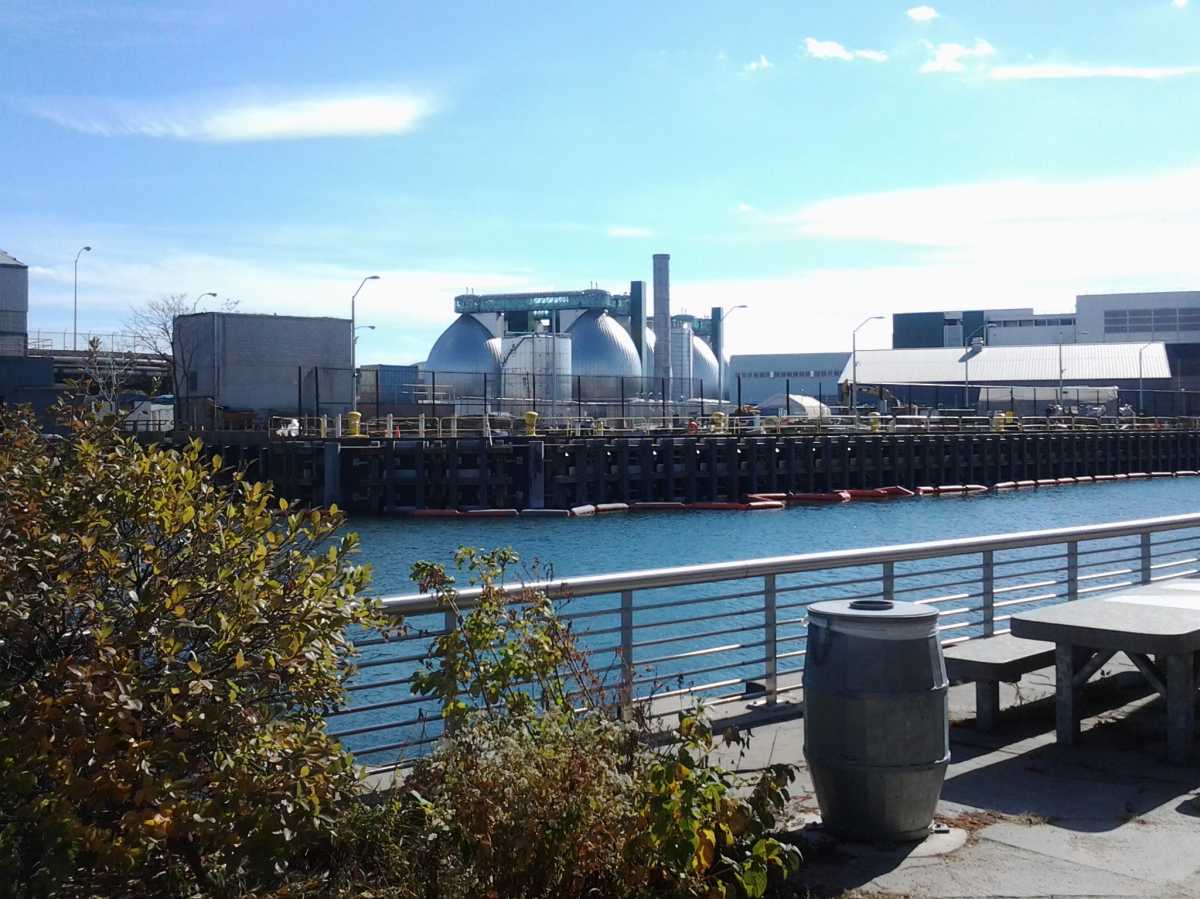The next time it rains, the city’s Department of Environmental Protection (DEP) wants Queens residents to wait until it stops before doing the dishes, taking a shower or flushing a toilet.
The appropriately titled “Wait…” pilot program is expanding throughout western Queens, the DEP announced on Monday. Participating homeowners and tenants are sent text messages alerting them that the Newtown Creek and Bowery Bay Wastewater Treatment plants are near capacity — and that they should minimize their water use in order to prevent sewer overflows from spilling into already polluted waterways such as the Newtown Creek and Flushing Creek.
The pilot program area of Queens covers all neighborhoods north of the Jackie Robinson Parkway and west of the Van Wyck Expressway, as well as portions of Kew Gardens Hills and Briarwood.
According to advocates, the Wait Program is geared at educating the public about where their dirty water winds up after going down the drain. Wastewater produced whenever someone washes clothes or dishes, or even flushes a toilet, travels into the city’s vast underground sewer system, destined for one of many sewage treatment plants for cleanup and processing.
But in a heavy rain event, not all of the storm runoff and wastewater winds up in the sewage treatment plants. When the plants hit capacity, excess wastewater is expelled through combined sewer overflows into waterways across the city. About 90 percent of the overflow is comprised of storm runoff, and the rest is household wastewater containing detergents, chemicals and raw sewage.
Willis Elkins, program director of the Newtown Creek Alliance, noted that combined sewer overflows “are one of the major water quality issues” affecting the creek, which is also a designated Superfund site due to decades of industrial pollution.
“There is an immediate opportunity for residents to reduce pollution by being aware of when sewage treatment plants hit capacity during rain events and overflow into local waterways, and then taking action to not create additional wastewater during these crucial periods,” Elkins said.
Flushing Creek and Flushing Bay are also combined sewer overflow points. The Guardians of Flushing Bay hopes that the Wait Program will help more people understand the pollution problem while also appreciating “the natural beauty of the waterways.”
“The Flushing waterways have long been plagued by sewage and stormwater pollution from combined sewer overflows,” the Guardians of Flushing Bay said in a statement. “Many residents in the Flushing Bay and Flushing Creek watersheds are unaware that their sewage may be going into the waterways when it rains.”

Wait Program texts will be activated during heavy rain events as the Bowery Bay and Newtown Creek plants approach capacity. Once the plants are back to normal strength, participants will receive text alerts thanking them for their cooperation.
The DEP will monitor participants’ water consumption through automated water meters in each building. The program starts this April and runs through May 2019; participants may opt out of the program at any time.
“While we invest hundreds of millions of dollars every year to build infrastructure that protects the health of local waterways, the Wait Program engages citizens and allows them to directly contribute to the protection of our environment,” DEP Commissioner Vincent Sapienza said.
Click here to learn more about it.




































